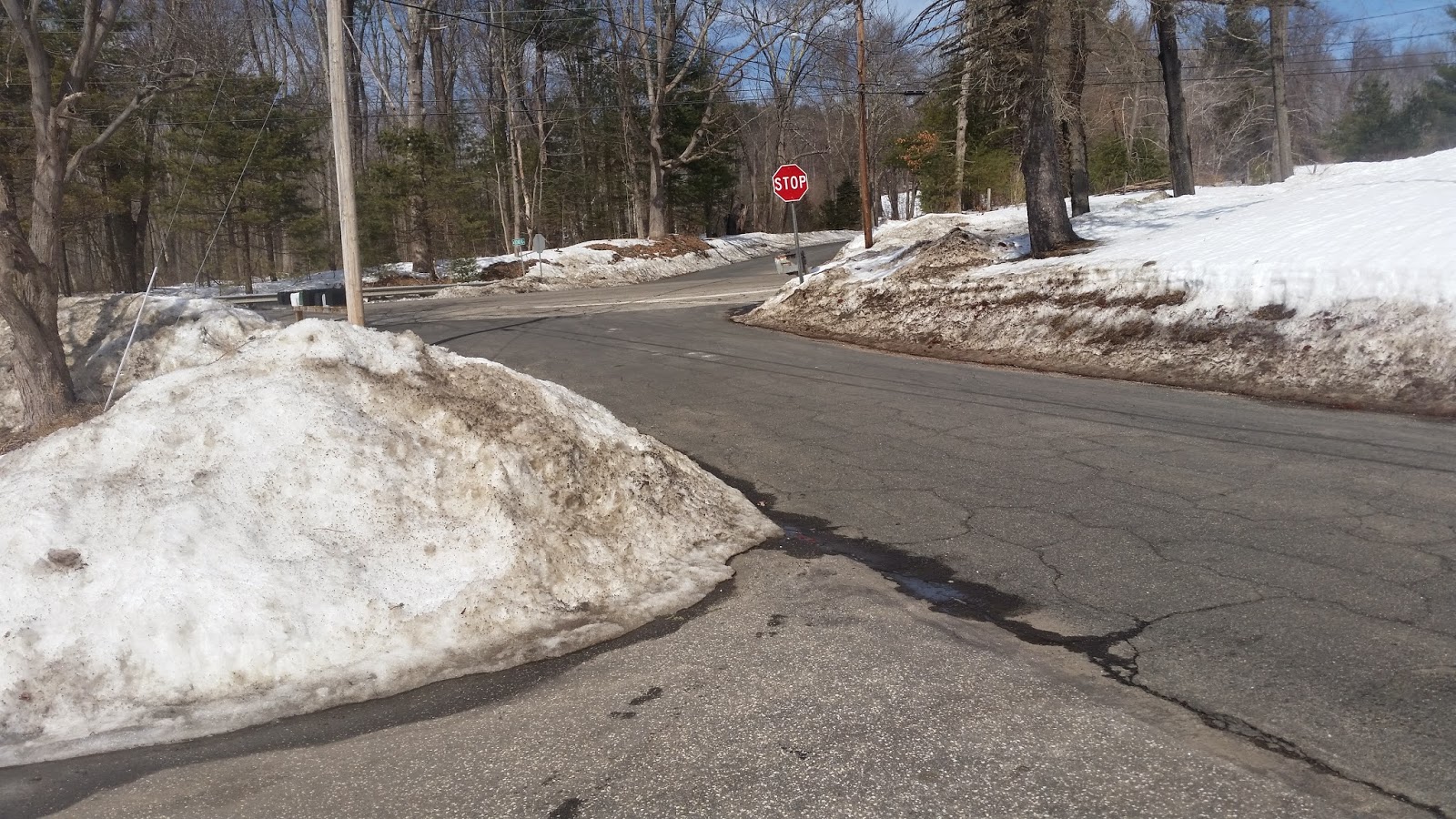And it's snowing. Things have been progressing, however. The ground is starting to thaw a little in the places where it's bare. The snow is finally starting to melt little by little. As soon as it gets squishy enough outside, we will transplant the 72 fava bean plants we started in toilet paper tubes.
Friday, March 20, 2015
Spring 2015 is here!
And it's snowing. Things have been progressing, however. The ground is starting to thaw a little in the places where it's bare. The snow is finally starting to melt little by little. As soon as it gets squishy enough outside, we will transplant the 72 fava bean plants we started in toilet paper tubes.
Wednesday, March 11, 2015
Driveway Puddling
When we first moved in, I thought the way water puddled on the driveway was just a nuisance. Any time it rained, the driveway would fill up, and a few hours later it would be gone again. This winter has brought some additional frustration though. In the last few weeks, I've really begun to realize the problem that this is.
From the road, the driveway slopes down toward the garage. Just before the garage, it slopes up again steeply, creating a big cup that holds water with nowhere to drain. This puddle can be 12" deep in some spots. It often freezes over and makes a big mess. When it's not frozen, it leaves no way to get in or out of the house in the front. One of the deepest pockets is in the walkway from the driveway to the door.
To further complicate things, the catchment area of this puddle isn't just the driveway itself, nor the roof of the garage that drains directly onto the driveway (no gutters), but the collection area extends out to the road, and all the way to the crown of the connecting state highway. We live in a rural area with no storm drains. The town's official storm water policy is to let the town's natural waterways take all of the surface runoff. A few hundred feet downslope on the road, there is an outlet to the brook. The problem is that all that water runs into the driveway instead of passing it by and going out into the brook. The driveway also has no lip on it, and being lower than the roadway, all the water flows into our driveway.
This is the driveway after I've shoveled the water off. It gets mostly dry, but on warm melting days like today, it will be filled up again in an hour.
Here's a short video of me removing water from the driveway with a snow shovel. I've found this to be the most successful method of getting rid of the water.
We're hoping to be able to fix the driveway at some point sooner rather than later. The neighbors say the driveway's been this way for 30 years. At some point, the driveway definitely shifted, settled, or sunk because it's cracked all over. It'd be nice if the water drained out TO the street, rather than in from the street. Off the side of the garage, where a lot of the water drains (usually via wicking where the water level reaches the grass on the side) the ground is VERY wet almost all of the time. I bet fixing the driveway will result in that area drying out a bit, too.
From the road, the driveway slopes down toward the garage. Just before the garage, it slopes up again steeply, creating a big cup that holds water with nowhere to drain. This puddle can be 12" deep in some spots. It often freezes over and makes a big mess. When it's not frozen, it leaves no way to get in or out of the house in the front. One of the deepest pockets is in the walkway from the driveway to the door.
To further complicate things, the catchment area of this puddle isn't just the driveway itself, nor the roof of the garage that drains directly onto the driveway (no gutters), but the collection area extends out to the road, and all the way to the crown of the connecting state highway. We live in a rural area with no storm drains. The town's official storm water policy is to let the town's natural waterways take all of the surface runoff. A few hundred feet downslope on the road, there is an outlet to the brook. The problem is that all that water runs into the driveway instead of passing it by and going out into the brook. The driveway also has no lip on it, and being lower than the roadway, all the water flows into our driveway.
This is the driveway after I've shoveled the water off. It gets mostly dry, but on warm melting days like today, it will be filled up again in an hour.
Here's a short video of me removing water from the driveway with a snow shovel. I've found this to be the most successful method of getting rid of the water.
We're hoping to be able to fix the driveway at some point sooner rather than later. The neighbors say the driveway's been this way for 30 years. At some point, the driveway definitely shifted, settled, or sunk because it's cracked all over. It'd be nice if the water drained out TO the street, rather than in from the street. Off the side of the garage, where a lot of the water drains (usually via wicking where the water level reaches the grass on the side) the ground is VERY wet almost all of the time. I bet fixing the driveway will result in that area drying out a bit, too.
Subscribe to:
Comments (Atom)





